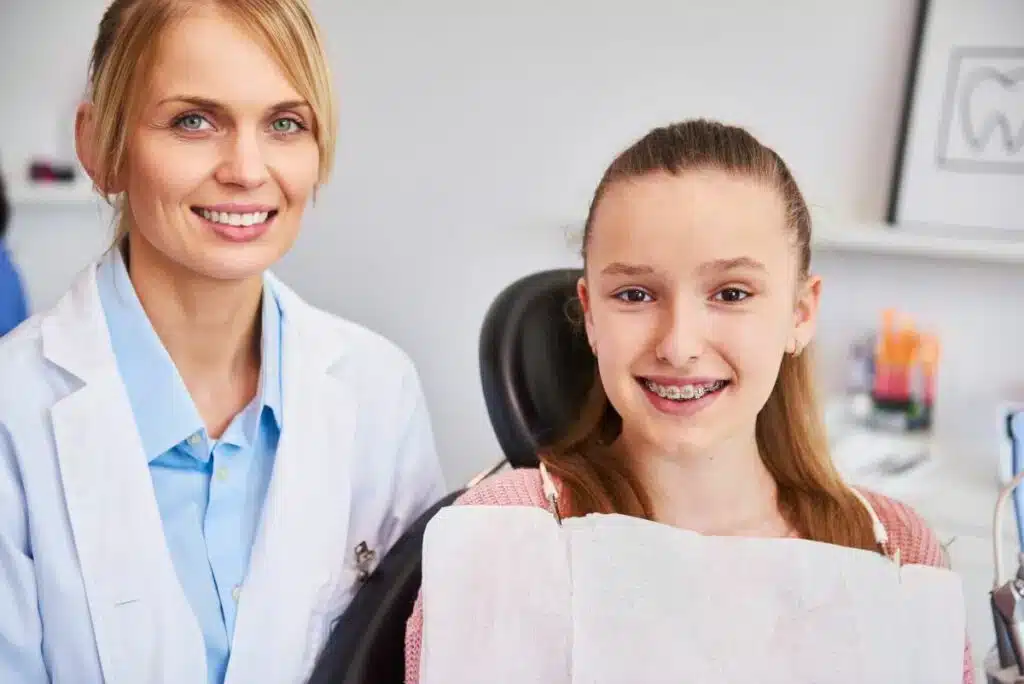Things about Causey Orthodontics
Table of ContentsThe Buzz on Causey OrthodonticsThe Main Principles Of Causey Orthodontics 7 Easy Facts About Causey Orthodontics ExplainedThe 25-Second Trick For Causey OrthodonticsCausey Orthodontics Can Be Fun For EveryoneThe 8-Minute Rule for Causey OrthodonticsCausey Orthodontics Fundamentals Explained
What is the difference between a dental expert and an orthodontist? All dental practitioners, including orthodontists, treat the teeth, gum tissues, jaw and nerves.
You can think of both physicians who deal with gum and teeth issues. The major distinction is that becoming an orthodontist needs a particular specialty in dealing with the misalignment of the teeth and jaw.
The Basic Principles Of Causey Orthodontics
An orthodontist is a dental professional that has actually undergone training to focus on the diagnosis, prevention and therapy of irregularities in the jaw and teeth. Their training consists of correcting these existing conditions. They can likewise recognize possible issues in teeth positioning that may create when problems are left neglected. Orthodontists can help people of all ages.
This includes all the essential education and learning to end up being a general dentist. According to the American Trainee Dental Association (ASDA), it means you will certainly need to have either a Doctor of Medicine in Dentistry (DMD) or a Doctor of Oral Surgery (DDS). In other words, orthodontists need to complete dental school and after that acquire an orthodontics specialty education and learning.
Some orthodontists also get their masters in craniofacial biology. These programs concentrate on 2 particular areas or self-controls: Dentofacial Orthopedics: This study focuses on directing teeth and jaw growth.
The Only Guide to Causey Orthodontics

 These consist of device such as braces, retainers and Invisalign. What does an orthodontist do, and what do they concentrate on? The overall goal of an orthodontist is to improve a patient's bite. Not everybody is born with straight teeth, and an orthodontist will ensure that individuals obtain uniformly spaced straight teeth.
These consist of device such as braces, retainers and Invisalign. What does an orthodontist do, and what do they concentrate on? The overall goal of an orthodontist is to improve a patient's bite. Not everybody is born with straight teeth, and an orthodontist will ensure that individuals obtain uniformly spaced straight teeth.
The Facts About Causey Orthodontics Uncovered
The American Organization of Orthodontists recommends your initial check up by age 7. You'll require to see your orthodontist if you have a misalignment in your teeth, also known as malocclusion. Likewise, if you notice irregular bite patterns, a slightly misshapen jaw, or when your teeth are jammed, you will likely require orthodontic therapy.
In enhancement, we use adjustable therapy schedules, flexible payment alternatives and an enjoyable, enjoyable experience.
An orthodontist is a dental professional trained to identify, prevent, and treat teeth and jaw irregularities. They deal with existing problems and are trained to recognize issues that may create in the future. Orthodontists deal with individuals of any ages, from youngsters to adults. People commonly associate an excellent smile with healthiness.
Not known Factual Statements About Causey Orthodontics
Malocclusion, or misaligned teeth, can lead to dental problems, consisting of dental caries, gum tissue disease, and tough or agonizing eating. But not everyone is born with straight teeth. If you have a negative bite or large areas between your teeth, you may intend to get in touch with a dentist focusing on orthodontic treatment.
(Picture Credit Scores: DigitalVision/Getty Images) Orthodontists make use of dealt with and removable oral tools, like dental braces, retainers, and bands, to transform the placement of teeth in your mouth. Orthodontic therapy is for dental irregularities, consisting of: Uneven teethBite troubles, like an overbite or an underbiteCrowded teeth or teeth that are too far apartJaw misalignmentThe objective of orthodontic therapy is to improve your bite.
The Single Strategy To Use For Causey Orthodontics

All orthodontists are dental professionals, yet not all dental professionals are orthodontists. Orthodontic residency programs provide extensive, focused guideline for oral experts. They concentrate on 2 locations: How to appropriately and securely relocate teeth Just how to effectively direct development in the teeth, jaw, and faceOnce an orthodontist has actually finished training, they have the alternative to come to be board certified.
Malocclusion leads to tooth overcrowding, an askew jaw, or irregular bite patterns. Malocclusion is typically treated with: Your orthodontist attaches metal, ceramic, or plastic square bonds to your teeth.
Not known Details About Causey Orthodontics
If you have only small malocclusion, you might have the ability to use clear dental braces, called aligners, as opposed to traditional dental braces. Some individuals need a headgear to aid relocate teeth right into line with stress from outside the mouth. After dental braces or aligners, you'll need to put on a retainer. A retainer is a custom-made device that maintains your teeth in position.